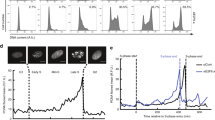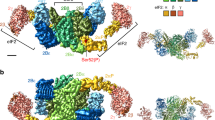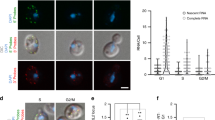Abstract
E2F is a complex family of transcription factors which appears to regulate the transcription of genes required for the S phase of the mammalian cell cycle. In the present work, we have examined the mechanisms regulating E2F-3 accumulation in mouse fibroblasts. We have determined that E2F-3 DNA binding activity is restricted to the G1/S transition and S phase in both normal BALB/c-3T3 fibroblasts and in an SV40 virus-transformed BALB/c-3T3 derivative. Immunoblot analysis indicates that G0 and G1 cells have little or no E2F-3 polypeptide and that the increase in the DNA binding activity of E2F-3 at the G1/S boundary is reflected by an increase in total E2F-3 protein. In contrast to the E2F-3 polypeptide, RNAse protection assays demonstrate that the E2F-3 mRNA is clearly present in G0 and G1 cells. Finally, pulse/chase experiments indicate that the half-life of E2F-3 is approximately 40-fold greater in cells blocked in S phase relative to asynchronously growing cells. Together, these results indicate that the accumulation E2F-3 at S phase may be regulated, at least in part, at the level of protein stability.
This is a preview of subscription content, access via your institution
Access options
Subscribe to this journal
Receive 50 print issues and online access
$259.00 per year
only $5.18 per issue
Buy this article
- Purchase on Springer Link
- Instant access to full article PDF
Prices may be subject to local taxes which are calculated during checkout
Similar content being viewed by others
Author information
Authors and Affiliations
Rights and permissions
About this article
Cite this article
Flores, A., Kassatly, R. & Cress, W. E2F-3 accumulation is regulated by polypeptide stability. Oncogene 16, 1289–1298 (1998). https://doi.org/10.1038/sj.onc.1201633
Received:
Revised:
Accepted:
Published:
Issue Date:
DOI: https://doi.org/10.1038/sj.onc.1201633
Keywords
This article is cited by
-
Expression of integrin alpha 10 is transcriptionally activated by pRb in mouse osteoblasts and is downregulated in multiple solid tumors
Cell Death & Disease (2013)
-
Direct repression of the Mcl-1 promoter by E2F1
Oncogene (2002)
-
Differences in DNA binding properties between E2F1 and E2F4 specify repression of the Mcl-1 promoter
Oncogene (2002)
-
Identification of E2F-3B, an alternative form of E2F-3 lacking a conserved N-terminal region
Oncogene (2000)
-
Exogenous E2F expression is growth inhibitory before, during, and after cellular transformation
Oncogene (2000)



